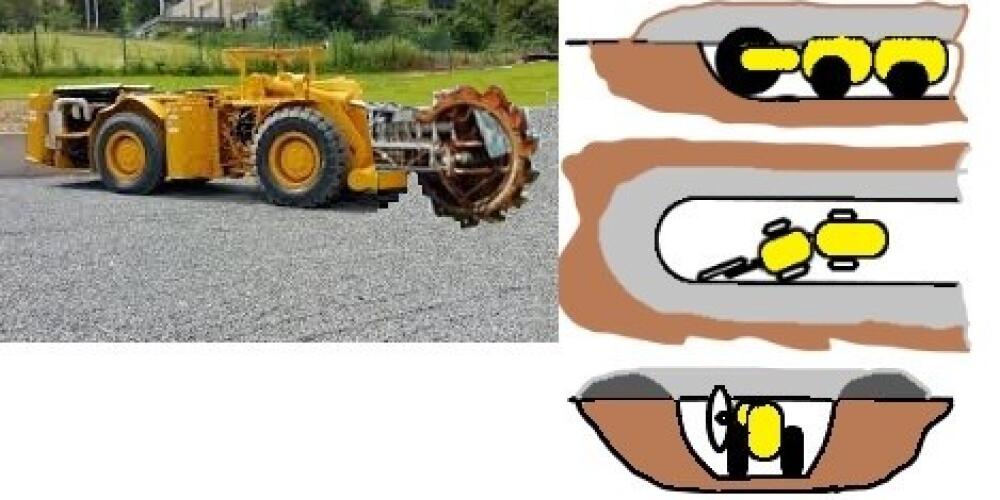
In the last hundred years, all armies have been vigorously developing offensive weapons, but investing little in defense equipment. After the soldiers occupy some terrain, it is most important to quickly dig up trenches, and dugouts so that some of the soldiers can successfully defend the conquered while the other part goes on.
Digging trenches quickly is not easy, especially if the trenches are to be dug under enemy fire. This is why trenches that are on a rifle range
are usually dug by hand, at night, while trenches and dugouts for long-range artillery are dug by excavators. On rocky terrains, digging trenches by hand is often not possible, and sometimes they are even dug with explosives at night.
In order for the trenches on the front lines to be dug up quickly, soldiers should be provided with excavators that can dig the trench so that it moves along the bottom of the trench, and scatter the ground and other material front and side.
An excavator like this could be made very easily.
Low, narrow excavators used in mining pits could be used for this purpose. Such an excavator should remove the front spoon and replace it with a rotating tool that can tear the ground or stones in front of it, and disperse the broken small pieces from the front upwards. The scattered land bends past the trenches, providing additional fine-grained lateral protection.
With such excavators assigned to individual military units, large units could be carry out very fast excavations and, with far fewer casualties, could be prevent enemy counter-attacks. The soldiers is could move freely through the trench without the danger of enemy gunfire or artillery fire. The only danger would be threatening them with mortar and howitzer fire. In order to protect the excavators from mortar fire, they should be additionally protected from the top by a steel plate above the driver and engine. If a channel is dug through a minefield, grenades can be activated. In this case, the rotating tool could be changed quickly, and in order not to damage the excavator or the driver itself, it is sufficient to strengthen the front of the excavator with a steel plate.
In addition to military use, these excavators could also be used to quickly and easily clear clogged streams and drainage channels during low water levels. Workers would not have to clean the banks of streams and canals from trees and shrubs. This would not endanger small birds and animals that normally live in such places and are very important for maintaining the ecological balance of the environment.
Other of my technical analyzes and innovations can be found in this book.
Tags
Featured articles